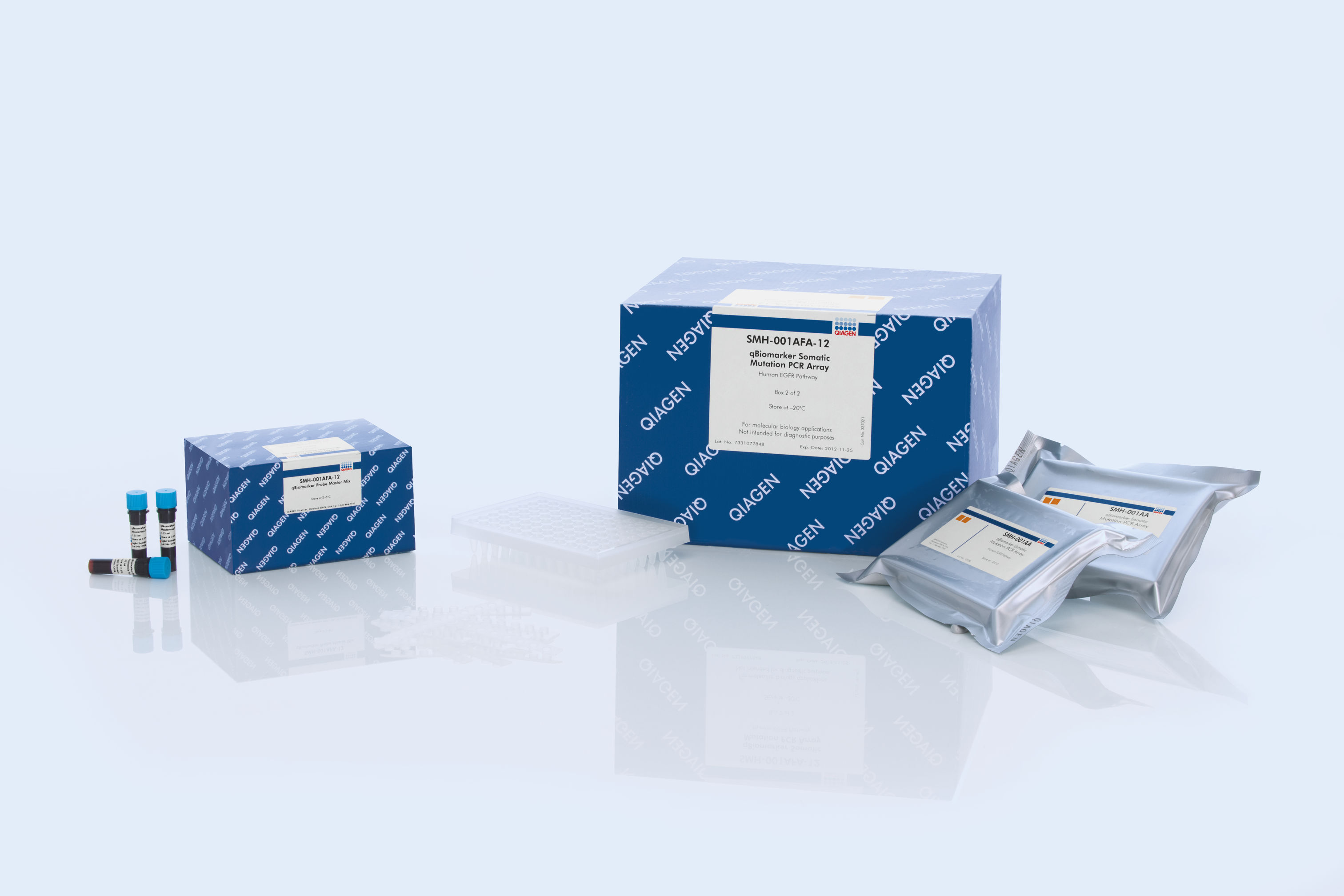PCR plate and master mix
Target List
KIT
The most frequently identified KIT gain-of-function mutations include the D816V point mutation; point mutations in, and a deletion of, exon 11 (the juxtamembrane domain); an exon 9 insertion; as well as exon 13 point mutations.
AKT1
The best known AKT1 mutations are c.49G>A, p.E17K, a PH domain mutation that results in constitutive targeting of AKT1 to plasma membrane, and an activating mutation, c.145G>A, p.E49K.
BRAF
Common point mutations in BRAF either increase kinase activity, such as L597V, L597Q and V600E, or inhibit kinase activity, such as G464V, G466V and G469A.
HRAS
The mutation assays detect the most important HRAS variants, all found in codons 12, 13, and 61.
KRAS
The mutation assays detect the most frequently occurring KRAS mutations in codons 12, 13, and 61. Mutations at these positions reduce the protein’s intrinsic GTPase activity and/or cause it to become unresponsive to RasGAP.
MAP2K1
The most important MAP2K1 variants cluster in the protein’s N-terminal negative regulatory domain and an adjacent domain, and they all activate the protein by increasing its intrinsic kinase activity.
NRAS
The mutation assays detect the most important NRAS variants, all found in codons 12, 13, and 61.
PIK3CA
The most frequently detected PIK3CA gain-of-function mutations occur either in the kinase domain (T1025-G1049, such as H1047L and H1047R) that increase its activity or in the helical domain (P539-E545) which mimic activation by growth factors.
PTEN
The most commonly detected PTEN loss-of-function mutations either truncate the protein (such as K6fs*4, R130*, R130fs*4, R233*, P248fs*5, and V317fs*3) or cause phosphatase inactivation (such as those at R130 and R173).






